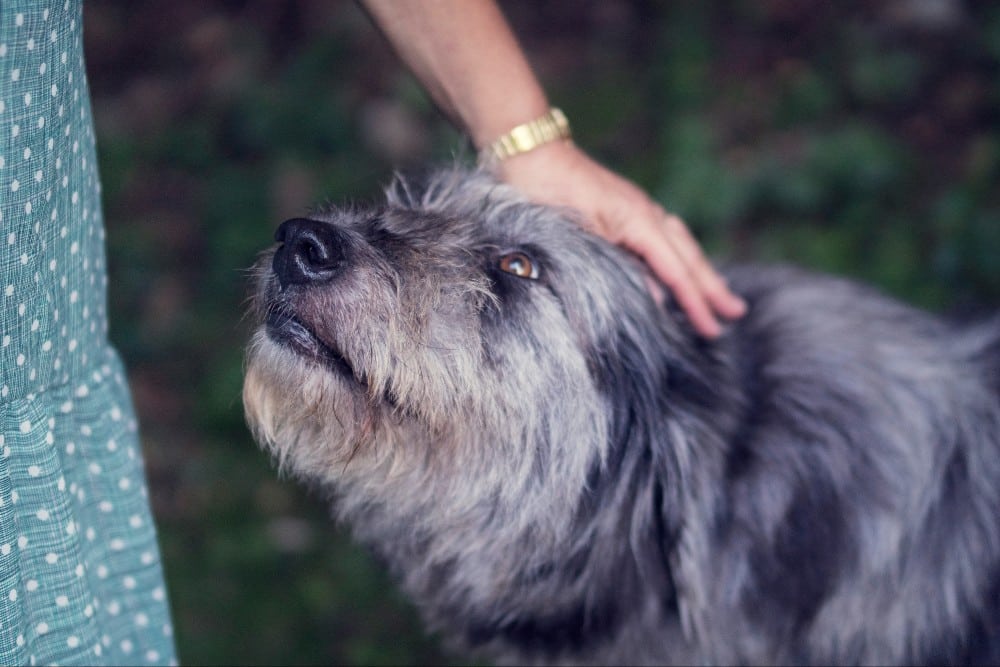Watching your dog sneeze, wheeze, scratch and bite at her skin is disturbing, especially when you can’t figure out what she is reacting to. While most allergies aren’t life-threatening, they can make your dog miserable. Not only is your dog uncomfortable, but allergies can lead to chronic respiratory issues if untreated for a long time.
“Allergies are fairly commonly in veterinary medicine and can account for up to 25% of pets’ visits to the veterinarian,” says Dr. Antje Joslin, veterinarian at Dogtopia, a dog daycare and boarding franchise. There are a wide variety of allergens that can trigger a reaction, she says, from proteins in foods to plants, molds or other animals in the environment. Other common allergens include insect proteins (such as flea saliva), chemicals and some medications.
Related: 10 Breeds That Are Prone to Allergies
If you’re curious, there’s a reason dogs develop allergies. “Just as in people, allergies in dogs occur when the immune system ‘overreacts’ to a foreign substance,” says Dr. Joslin. In response, your dog’s body produces antibodies to deal with the irritating intruder. Too many antibodies, and your dog experiences symptoms such as inflammation of the skin, airway or digestive tract. Some dogs have even been known to rip their fur off with scratching, leaving their skin raw and bloodied.
While there are some breeds that are more genetically prone to developing allergies, “allergies are a fairly common occurrence in our canine companions and can affect any breed of dog,” says Dr. Joslin. Generally, allergic reactions typically appear in dogs older than six months, usually between one and four years old, but dogs of any age can be affected.
There are various ways to figure out what your dog is allergic to and then treat those allergies, but first, you need to know what to look for.
Dog Allergy Symptoms
In dogs, symptoms will depend of what type of allergy your dog has. Environmental allergies have different signs than food or chemical allergies.
“The most common allergy symptoms in dogs occur on the skin and including itching, redness, swelling and occasionally hives,” says Dr. Joslin. A dog with an allergy that affects the skin will paw, scratch, bite, and rub their skin against hard things like furniture, cement walls and the ground. A dog that is constantly licking his paws to the point where the skin looks raw is often suffering from an allergy (though check the paws first to see if there’s an injury).
“Many dogs with recurrent ear infections have underlying allergies that manifest as itching and redness in the ears,” says Dr. Joslin. “Inflamed skin can cause the natural protective barriers of the skin to break down.” This symptom, along with frequent (or constant) scratching, rubbing or licking, can result in extremely uncomfortable — and even painful — secondary skin infections with symptoms of scabbing, crusting, fur loss and/or extremely reddened skin.
Some allergies may cause gastrointestinal symptoms, including occasional diarrhea, soft poop or poop with a lot of mucous in it, and sporadic vomiting, she says. “Allergies that manifest themselves as respiratory symptoms are less common in dogs but still may occur.” Symptoms include runny nose and/or eyes, sneezing or coughing.
Related: Here’s What Is in Dog Food That Causes Allergies — and What to Do About It
Food allergy symptoms can range from skin conditions to stomach upset. If the allergy is especially severe, a dog can have an extreme anaphylactic reaction, and these can be life-threatening. Symptoms of anaphylaxis include hives, a swollen face or muzzle, drooling, vomiting and diarrhea. It may progress to difficulty breathing. This is a medical emergency.
“If your dog is experiencing any of these symptoms it is important to consult your veterinarian,” Dr. Joslin counsels. “The respiratory and gastrointestinal symptoms mentioned could be a sign of a more serious problems and should never be written off as allergies without first consulting a veterinarian.”
How Does a Veterinarian Test for Allergies?
Your regular veterinarian is a good place to start for preliminary tests to make sure there aren’t other illnesses responsible for your dog’s symptoms.
It’s also important to start with a thorough physical exam and lab tests, says Dr. Joslin. Just make sure that your dog’s primary “parent” is at the appointment to answer any questions the veterinarian may have about your dog’s health and lifestyle.
Common allergens in dogs include:
- Pollen
- Trees
- Grass
- Mold
- Dander
- Perfumes
- Cigarette smoke
- Fleas
- Flea control products
- Prescription medication
- Beef
- Dairy
- Wheat
- Egg
- Pork
- Chicken
- Corn
- Soy
- Milk
“If your veterinarian suspects food allergies, they may recommend testing an elimination diet,” Dr. Joslin explains. “It is critical to never give your dog any food or treats other than the prescribed diet when trying to rule out food allergies via an elimination diet. Otherwise, you are just wasting time and money and ultimately may end up very frustrated.”
Related: How to Help Your Dog Survive Allergy Season (Infographic)
All this can be expensive, but there are tests now on the market that can lower the costs (but there have been questions about accuracy). These kits provide the equipment to collect a sample of your dog’s saliva. Similar to a canine DNA test, it’s as easy as swabbing your dog’s cheeks and then sending it off for allergy testing. After you get the results, though, take them (and your dog) to your veterinarian.
Allergy Treatments
“There are a wide variety of treatments available to help manage your pet’s allergy symptoms, but it is important to realize that there is no ‘cure’ for allergies,” says Dr. Joslin. “Therefore, it is important to stay vigilant in managing allergies by avoiding potential allergens whenever possible and using medications to help limit symptoms.”

SHOP NOW
If the genetic tendency to develop allergic problems is diagnosed, a trial of allergy medication may be prescribed to assess your pet for a response. “There are some blood tests available that can help determine what environmental factors may play a role in your dog’s allergies,” says Dr. Joslin.
Other treatments include immunotherapy treatment. Similar to human allergy shots, this treatment uses minute amounts of the substance the dog is allergic to so the dog’s body can build up a tolerance to the allergen.
You could also consider relieving by buying itch-relief shampoo, like our Organic Aloe Vera Dog Shampoo or Organic Dog Soap Infused with Avens Oat Straw. There are also balms, like our Beeswax Paw Balm, which moisturizes, soothes and nourishes your pup’s skin.
Related: Here’s What Is in Dog Food That Causes Allergies — and What to Do About It
If your dog suffers from food allergies, you will have to adjust his diet. “It is often much easier to manage food allergies in dogs than in humans because their diets are more limited than ours,” Dr. Joslin notes. There are a variety of commercial dog food with limited ingredients or prescription vet ‘hydrolyzed protein’ food that can be used to manage food allergies.
Just be sure that any treats, human food or medications that are given to your dog are safe, says Dr. Joslin. And don’t forget to spread the word to any friends, family or caretakers that may feed your dog.
“If your dog seems to be suffering from allergies, it is important that you partner with your veterinarian and come up with a comprehensive plan to manage your pet’s allergies,” adds Dr. Joslin.
Bye Bye Shabby Coat nourishes your dog’s skin and coat from the inside out. Veterinarian formulated and using powerful natural ingredients, including healthy omegas, salmon oil, and vitamin E, our chews help heal dry, itchy, irritated skin, while also promoting a shinier and softer coat. All our supplements are proudly manufactured in the USA.



















